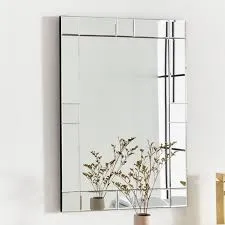

One-Way Reflective Glass A Glimpse into Privacy and Aesthetics
In today's world, where personal privacy and design innovation are paramount, one-way reflective glass has emerged as a revolutionary material in architectural and interior design. This unique type of glass not only enhances the aesthetic appeal of buildings and spaces but also offers a significant level of privacy without compromising natural light.
One-Way Reflective Glass A Glimpse into Privacy and Aesthetics
The practical applications of one-way reflective glass are diverse and increasingly popular in various settings. In commercial environments, it is commonly used in offices, conference rooms, and storefronts. Businesses implement this glass to provide employees with a quiet, private working atmosphere while still inviting natural light into the space. In retail settings, store owners use one-way reflective glass to attract customers without revealing the inner workings or displays, creating an air of mystery and intrigue.

In residential settings, one-way reflective glass can be used in windows and patio doors, allowing homeowners to enjoy uninterrupted views of their surroundings while keeping their living spaces private. This aspect of residential design not only contributes to comfort but also enhances security, as it deters prying eyes from intruding on personal spaces.
Moreover, one-way reflective glass is a stylish addition to architectural projects. It combines functionality with modern aesthetics, allowing for sleek, contemporary façades and interiors. Its ability to reflect sunlight also contributes to energy efficiency, as it helps regulate indoor temperatures and reduce glare, making buildings more environmentally friendly.
However, the effectiveness of one-way reflective glass varies based on lighting conditions. It is most effective when there is a significant difference in light levels between the two sides. During the day, when the exterior is brighter, the reflective surface works optimally. However, at night, when interior lights are stronger, the reflective properties diminish, and privacy can be compromised. Therefore, it is essential for architects and designers to consider these factors when incorporating this material into their projects.
In conclusion, one-way reflective glass is a remarkable innovation that merges privacy, aesthetics, and practicality. As urban landscapes continue to evolve and personal space becomes increasingly valued, this type of glass offers a perfect solution for modern living and working environments, ensuring that while the world outside is visible, personal spaces remain securely private.